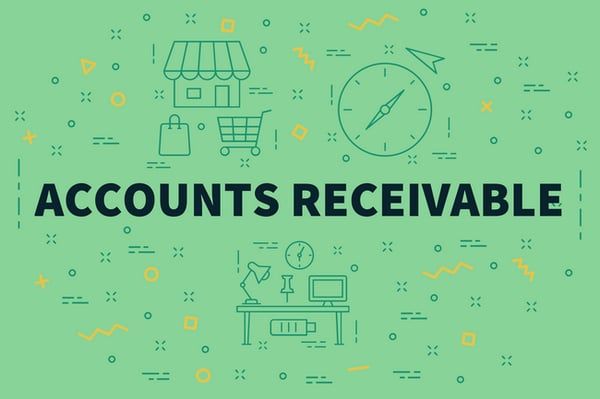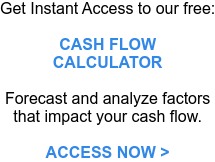 Accounts receivables are a hot topic for business owners because they are the primary driver of cash flowing into the company. Unfortunately, in the US 39% of invoices are paid late and 52% of businesses have been asked by clients to extend their payment terms. This creates a difficult situation for business owners because late payments not only hurt cash flow management but may also serve as an early warning sign that payment is not coming.
Accounts receivables are a hot topic for business owners because they are the primary driver of cash flowing into the company. Unfortunately, in the US 39% of invoices are paid late and 52% of businesses have been asked by clients to extend their payment terms. This creates a difficult situation for business owners because late payments not only hurt cash flow management but may also serve as an early warning sign that payment is not coming.
Typically, the longer invoices remain outstanding the less likely they are to be paid. When invoices cannot be collected on, they become bad debt and are written off, erasing the revenue they would have generated for the hardworking businesses that earned them. Bad debt hurts short-term cash flow and long-term profitability. In fact, every year an average of 4% of accounts receivable are written off as bad debt, which equates to $400,000 in lost revenue for a company with $10M in sales annually.
So, what can you do to reduce your accounts receivables problems?
These nine proven techniques can speed up AR collection and reduce the likelihood of having a preponderance of uncollectable AR on the books:
Create an Accounts Receivable Aging Report
Once you know where the business stands in terms of current outstanding AR, you can work on improving your AR practices. Track the status of aging AR to understand which invoices have not yet been paid and how long they have been outstanding. Categorize AR into 0-30 days, 31-60 days, 61-90 days, and 90 days+ and update the report regularly to monitor your ongoing AR collections efforts.
Check Credit History
Most businesses try to address late payments and uncollectable accounts once they have become a problem. However, one of the best ways to manage AR is by being proactive.
Before the sale is even made, do the work to determine the likelihood of being paid on time. It is a good practice to run a credit history check on potential clients (at least for large deals). Examine their financial position and previous business relationships to get a sense of what to expect and then set payment terms based on your findings. You do not have to turn down the business, but you should price your offerings to make it worth your while if additional work may be needed to collect on invoices or if you might have to wait longer to get paid.
Formalize a Payment Policy
According to survey data, only 20% of billing departments have a formal payment policy and 44% of businesses that do only update their policy every 2 years or more.
Every business should have a formalized payment policy that clearly establishes payment terms and late payment penalties. Policies should be updated annually (or more often as needed) to reflect current market conditions and address any AR issues that have arisen since it was last changed.
When setting payment policies, do not sacrifice business profit to make the sale or complete the agreement. You may, however, offer a discount for early payment or establish a payment plan for qualified applicants. Consult with your accountant, CFO, or business banker to understand if this makes sense for your business and can be done without hurting profitability. If your payment policy provides for a discount or other incentive, ensure that the details are in writing and all parties agree to it before any work is done or products are provided to improve its enforceability.
Once a policy has been created, this document can be used as a resource from the beginning of the customer journey. Discuss payment during the sales conversation to ensure customers are on the same page and avoid any surprises later.
Send Invoices Promptly
For services, send an invoice immediately after work is completed instead of waiting for a pre-determined day of the week or time of the month. Batching invoices to send on the first or last day of the month creates an unnecessary delay. Since 50% of companies must wait 10-25 days for invoices to be approved on their end, your business should everything it can to get invoices sent as quickly as possible.
Sending electronic invoices gets them into customers’ hands faster than mailing them, which is why so many businesses choose to use accounting systems that allow for emailed invoices. Regardless of how you choose to send invoices, confirm that invoices have been received by following up with a phone call or email after the invoice has been sent. In a recent survey, 11% of customers indicated they had not received an invoice that a company had sent to them. Following up not only ensures that your customer received the invoice but may also encourage them to pay it faster by making it harder to overlook.
Reduce Errors
Before sending an invoice always check to make sure it is correct. This may seem like obvious advice, but 49% of payment disputes arise from incorrect purchase order information. Clearly, eliminating errors is a key component of reducing AR collection issues. Ensure it has all the pertinent information and that everything included is correct, especially if the invoice was created from a generic template.
Encourage Timely Payments
Remove any excuse that your customers could have to not pay you by offering multiple payment options, especially those that can be received immediately (like credit card, ACH transfer, and PayPal). Diversifying your available payment choices with electronic payment options increases the likelihood of getting paid more quickly.
Additionally, you should take advantage of the cash management services offered by your bank. Many financial institutions offer services like lockbox banking to help their business clients receive payments faster and avoid the stalling techniques that some businesses use to delay payments to vendors. If your bank does not provide these types of services, there are third-party providers that offer them as standalone services. Do your research to find out what will be most advantageous for your company.
Diversify Your Revenue Stream
Only doing business with one type of customer can leave you stuck if all your clients have similar payment characteristics. Instead, focus on having some clients that pay more quickly to balance out those that have longer payment terms. Additionally, plan to bring on some smaller accounts to help cushion the blow in case a large client’s business is lost. The more you can diversify your revenue stream, the easier it will be to manage your cash flow.
Act Quickly on Outstanding Accounts Receivables
The longer an invoice goes without being paid, the less likely it is to get paid at all. On average, 26% of invoices are uncollectable at the three-month mark, but that number rises to 70% at six months and 90% at 12 months, respectively.
Contact customers immediately when an invoice is outstanding. Clearly communicate any late payment terms without being rude or bullying. Do not treat your customer harshly, just start the conversation to understand why the invoice has not been paid and improve the likelihood that future invoices will be paid on time. Remember, the goal is to keep their business.
Keep following up and document all communications to provide to your bookkeeper or accountant. This documentation will be important to aid in dispute resolution if it comes to that point and should also be passed along to a collection agency or your legal counsel when requested.
Automate AR
Automating AR is the single most effective way to improve AR collectability and increase how quickly invoices are paid while simultaneously reducing time spent conducting AR activities. In fact, recent data shows us that companies that automate their AR functions spend 9% less time prioritizing their collections activities and also 9% less time finding information to use in their communications with customers.
AR automation can be done through utilizing software in-house or outsourcing AR functions to a reputable third-party company. Regardless of which method your company uses, automating AR should allow you to send invoices electronically, process payments online, efficiently manage different client payment terms and lines of credit, and keep tabs on aging AR.
Your accounting team should have a hand in developing your payment policy, overseeing your collections efforts, and automating your AR functions. Trust your CFO to turn AR into cash to fuel your business, or hire a CFO consultant to spearhead this crucial function.







